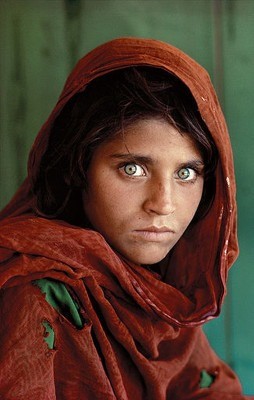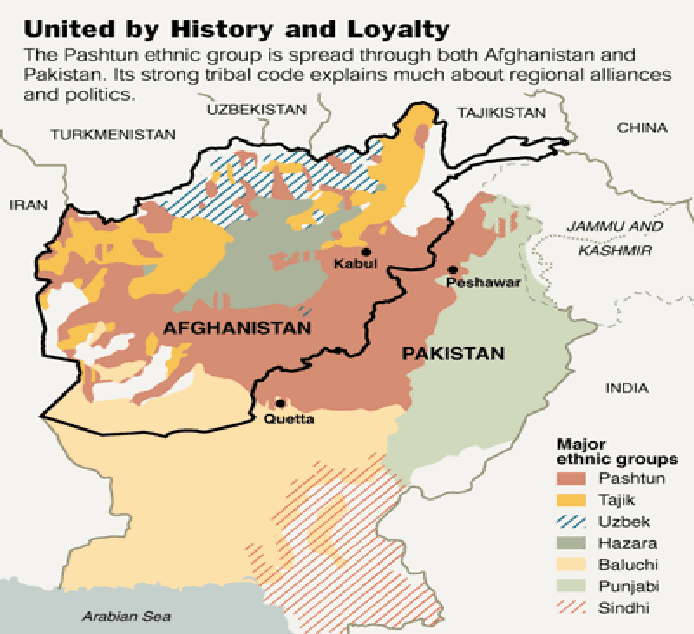Expect mass executions, skinning alive of schoolteachers, and a general reenactment of ISIS. This is objectively awful. But it’s not all bad! Let’s be Stoic about this and try to see any silver lining here, because we really have no other option. Lest I be accused of making light of tragedy, know that I am deeply troubled by all of this, and this is my copium.
The Afghani army is a bunch of opioid-addicted pederasts and their ineffectual defense of Kabul was a no-brainer. I was reminded of the old truism that modern secular Arab armies can’t fight as seen in Israel’s undefeated history and recently Iraq vs Isis but now I’d have to extend that Eastward somewhat.
The degenerate regime and culture will be squashed, again. That kills two birds – opioid addiction and pedophilia. In this article we will explore the tradeoffs between the old regime and the Taliban.
The Situation
Heroin Addiction
Over 10% of the population is addicted to heroin.
Addiction rose by 1,000% from 2005-2015 “From an estimated 200,000 opium and heroin addicts in 2005, the number rose to nearly a million in 2009 and reached between 1.9 million to 2.4 million in 2015, the United Nations reported.”
Women And Children Are The Emerging Face Of Drug Addiction In Afghanistan| NPR
Pedophilia
Afghanistan is a Bizarro country where the wildest fever dreams of QAnon are actually legit.
I acknowledge that it is slightly sexist to be outraged by the sexual slavery of boys while turning a blind eye somewhat to the wholesale enslavement of women.
The Taliban is Afghanistan’s best hope for stopping heroin addiction and pedophilia
Through draconian action, the Taliban practically eliminated heroin addiction during their prior reign. (Source) Religious fervor, in general, is an effective tool against addiction.
Pedophilia’s case is much more cut and dry. “Although bacha bazi has existed throughout history in parts of Afghanistan, the practice of pedophilia served as one of the provocations for the Taliban’s ascendance to power. The Taliban banned bacha bazi, forcing the custom underground. After the Taliban’s ouster in 2001, the practice was rekindled. In the years since, Afghan military commanders, warlords, and other men with authority have been cited by human rights groups for engaging in the practice.” Military Overlooked Sexual Abuse by Afghan Allies, Investigation Says | The Dancing Boys of Afghanistan | FRONTLINE | PBS | Official Site
The History

Fun fact – so many Afghanis have English genes, because they married the widows after killing their husbands in the 1800s
Now let’s look at Afghani DNA. This will be an eye opener. Be sure you are sitting down!

1) Afghan Pashtun
Sample 1:
West Asian: 43.1%
South Asian: 39.6%
Irish, Scottish and Welsh: 8.7%
Central Asian: 2.3%
Easter European: 2.2%
Sample 2:
Central Asian: 33.3%
South Asian: 31.2%
West Asian: 23.4%
English: 5.3%
Afghan Tajik
Central Asian: 41.8%
South Asian: 18.9%
West Asian: 13.7%
Scandinavian: 13.5%
More Ethnicities (Middle East): 12.1%
More Ethnicities (Europe): 6.8%
…and how did this happen? Read on!
The last stand of British, 1842 – WOW!
“On 1 January 1842, following some unusual thinking by Elphinstone, which may have had something to do with the poor defensibility of the cantonment, an agreement was reached that provided for the safe exodus of the British garrison and its dependents from Afghanistan.[56] Five days later, the withdrawal began. The departing British contingent numbered around 16,500, of which about 4,500 were military personnel, and over 12,000 were camp followers. Lieutenant Eyre commented about the camp followers that “These proved from the very first mile a serious clog on our movements”.[57] Lady Sale brought with her 40 servants, none of whom she named in her diary while Lieutenant Eyre’s son was saved by a female Afghan servant, who rode through an ambush with the boy on her back, but he never gave her name.[57] The American historian James Perry noted: “Reading the old diaries and journals, it is almost as if these twelve thousand native servants and sepoy wives and children didn’t exist individually. In a way, they really didn’t. They would die, all of them – shot, stabbed, frozen to death – in these mountain passes, and no one bothered to write down the name of even one of them”.[57] The military force consisted mostly of Indian units and one British battalion, 44th Regiment of Foot.
They were attacked by Ghilzai warriors as they struggled through the snowbound passes. On the first day, the retreating force made only five miles and as Lady Sale wrote about their arrival at a village of Begramee: “There were no tents, save two or three small palls that arrived. Everyone scraped away the snow as best they might, to make a place to lie down. The evening and night were intensely cold; no food for man or beast procurable, except a few handfuls of bhoosay [chopped stew], for which we had to pay five to ten rupees”.[58] As the night fell and with it, the temperatures dropped well below freezing, the retreating force learned that they lost all of their supplies of food and their baggage.[59] On the second day all of the men of the Royal Afghan Army’s 6th regiment deserted, heading back to Kabul, marking the end of the first attempt to give Afghanistan a national army.[58] For several months afterwards, what had once been Shuja’s army was reduced to begging on the streets of Kabul as Akbar had of all of Shuja’s mercenaries mutilated before throwing them on the streets to beg.[60] Despite Akbar Khan’s promise of safe conduct, the Anglo-Indian force was repeatedly attacked by the Ghilzais, with one especially fierce Afghan attack being beaten off with a spirited bayonet charge by the 44th Foot.[58]
While trying to cross the Koord-Kabual pass in the Hindu Kush that was described as five miles long and “so narrow and so shut in on either side that the wintry sun rarely penetrates its gloomy recesses”, the Anglo-Indian force was ambushed by the Ghilzai tribesmen.[61] Johnson described “murderous fire” that forced the British to abandon all baggage while camp followers regardless of sex and age were cut down with swords.[62] Lady Sale wrote: “Bullets kept whizzing by us” while some of the artillerymen smashed open the regimental store of brandy to get drunk amid the Afghan attacks.[61] Lady Sale wrote she drank a tumbler of sherry “which at any other time would have made me very unlady-like, but now merely warmed me.”[61] Lady Sale took a bullet in her wrist while she had to watch as her son-in-law Sturt had “…his horse was shot out from him and before he could rise from the ground he received a severe wound in the abdomen”.[61] With his wife and mother-in-law by his side in the snow, Sturt bled to death over the course of the night.[61] The gentle, kindly, but naive and gullible Elphinstone continued to believe that Akbar Khan was his “ally”, and believed his promise that he would send out the captured supplies if he stopped the retreat on 8 January.[63] Adding to the misery of the British, that night a ferocious blizzard blew in, causing hundreds to freeze to death.[64]
On 9 January 1842, Akbar sent out a messenger saying he was willing to take all of the British women as hostages, giving his word that they would not be harmed, and said that otherwise his tribesmen would show no mercy and kill all the women and children.[61] One of the British officers sent to negotiate with Akbar heard him say to his tribesmen in Dari (Afghan Farsi) – a language spoken by many British officers – to “spare” the British while saying in Pashto, which most British officers did not speak, to “slay them all”.[65] Lady Sale, her pregnant daughter Alexandria and the rest of British women and children accepted Akbar’s offer of safe conduct back to Kabul.[61] As the East India Company would not pay a ransom for Indian women and children, Akbar refused to accept them, and so the Indian women and children died with the rest of the force in the Hindu Kush.[63] The camp followers captured by the Afghans were stripped of all their clothing and left to freeze to death in the snow.[66] Lady Sale wrote that as she was taken back to Kabul she noticed: “The road was covered with awful mangled bodies, all naked”.[67]
In the early morning of 10 January, the column resumed its march, with everyone tired, hungry, and cold.[63] Most of the sepoys by this time had lost a finger or two to frostbite, and could not fire their guns.[68] At the narrow pass of Tunghee Tareekee, which was 50 yards long, and only 4 yards wide, the Ghizye tribesmen ambushed the column, killing without mercy all of the camp followers. The Anglo-Indian soldiers fought their way over the corpses of the camp followers with heavy losses to themselves.[63] From a hill, Akbar Khan and his chiefs watched the slaughter while sitting on their horses, being apparently very much amused by the carnage.[63] Captain Shelton and a few soldiers from the 44th regiment held the rear of the column and fought off successive Afghan attacks, despite being outnumbered.[63] Johnson described Shelton as fighting like a “bulldog” with his sword, cutting down any Afghan who tried to take him on so efficiently that by the end of the day no Afghan would challenge him.[69] On the evening of 11 January 1842, General Elphinstone, Captain Shelton, the paymaster Johnston, and Captain Skinner met with Akbar Khan to ask him to stop his attacks on the column.[70] Akbar Khan provided them with warm tea and a fine meal before telling them that they were all now his hostages as he reckoned the East India Company would pay good ransoms for their freedom, and when Captain Skinner tried to resist, he was shot in the face.[70] Command now fell to Brigadier Thomas Anquetil.[70]
The evacuees were killed in huge numbers as they made their way down the 30 miles (48 km) of treacherous gorges and passes lying along the Kabul River between Kabul and Gandamak, and were massacred at the Gandamak pass before a survivor reached the besieged garrison at Jalalabad. At Gandamak, some 20 officers and 45 other ranks of the 44th Foot regiment, together with some artillerymen and sepoys, armed with some 20 muskets and two rounds of ammunition to every man, found themselves at dawn surrounded by Afghan tribesmen.[71] The force had been reduced to fewer than forty men by a withdrawal from Kabul that had become, towards the end, a running battle through two feet of snow. The ground was frozen, the men had no shelter and had little food for weeks. Of the weapons remaining to the survivors at Gandamak, there were approximately a dozen working muskets, the officers’ pistols, and a few swords.
The British formed a square and defeated the first couple of the Afghan attacks, “driving the Afghans several times down the hill” before running out of ammunition. They then fought on with their bayonets and swords before being overwhelmed.[71] The Afghans took only 9 prisoners and killed the rest.[71] The remnants of the 44th were all killed except Captain James Souter, Sergeant Fair, and seven soldiers who were taken prisoner.[72] The only soldier to reach Jalalabad was Dr. William Brydon and several sepoys over the following nights. Another source states that over one hundred British were taken prisoner.[73] One British NCO fled from Gandamak to Gujrat India on foot according to a source cited from The Times of 2 March 1843 by Farrukh Husain who writes: “The oddest account of escape from Gundamuck concerns that of a dark-skinned faqir who appeared in India in rags but was in fact a Scottish non commissioned officer who fled all the way to a British army Camp Deesa in Gujrat India, “This morning a strange man came into camp, covered with hair, and almost naked his face burnt very much; he turned out to be Lance-Sergeant Philip Edwards of the Queen’s 44th Regiment who escaped at the general slaughter at Gundamuch, Afghanistan, and after travelling 15 months in a southerly direction by the sun, he found his way into camp here, not knowing where he was.””[11]
Many of the women and children were taken captive by the Afghan warring tribes; some of these women married their captors, mostly Afghan and Indian camp followers who were wives of British officers. Children taken from the battlefield at the time who were later identified in the early part of the 20th century to be those of the fallen soldiers were brought up by Afghan families as their own children.
Wikipedia
(The Brits came back and took Kabul shortly thereafter, but quickly rallied everyone and fled Afghanistan for good, in a similar stroke as what’s happening right now)
Pashtuns need a country
Behind ALL of this, is the plain fact that the Pashtuns to Afghanistan/Pakistan are basically like the Kurds to Syria/Iraq/Turkey.

Treating this as some Western war against fundamentalist barbarism completely misses the point, in the same way that the US viewed Vietnam as a war against communism, when it was actually primarily a war for independence.
Add in the post 9/11 American penchant for nation-building on cultures that were by no means ready for it, and you have a recipe for disaster. The average American has a few cultural identities – nationality, race, state, socioeconomic class, religion, occupation, political party.
Afghanis have all that plus tribes, clans, families, cartels, and factions, if not more subsects. Anarchy creates fragmentation. It is FAR more complicated. You can be sure this shift will affect Pakistan in a huge way. I hope someday Pashtuns get their own country, if countries are even a thing in the future.
The Taliban are the lesser evil
Now on to the question:
Would you rather live under strict Islam, where schoolteachers are skinned alive for teaching girls how to read, or live in a society where young boys are treated as sex objects, traded around like slaves, and over 10% of the population is addicted to opioids?
Yes, it’s that binary, a choice so stark we in the West have trouble picturing it as real.
One could conceivably argue that Afghanistan’s best chance is the hard-edged structure of the Taliban. All hopes pinned upon eventually watering down their fundamentalism, and hopefully in a generation or two an Ataturk type appears that modernizes.
Perhaps the greatest copium is placing hope in the power of the Internet to modernize attitudes:
“And let’s also remember: When the United States invaded Afghanistan in 2001, iPhones, Facebook and Twitter didn’t even exist. Flash forward to today: Afghanistan is not only much more connected to the world, but it’s connected internally as well. It will not be nearly as easy for the Taliban to hide their abuses from the world or from fellow Afghans… In 2001, virtually no one in Afghanistan owned a mobile phone. Today, more than 70 percent of Afghans do, and many of them have internet-enabled smartphones” – Thomas Friedman, NYT 8/16/21
Afghanistan could end up being a North Korea – contained and isolated.
No matter what happens, change is coming to Afghanistan, but at least we aren’t there anymore mucking it up and losing trillions.

Think of Afghans as the Fremen from Frank Herbert’s Dune. Stark. Hardy mountain folk. Indomitable warriors on a Jihad.
And they even have their spice…





